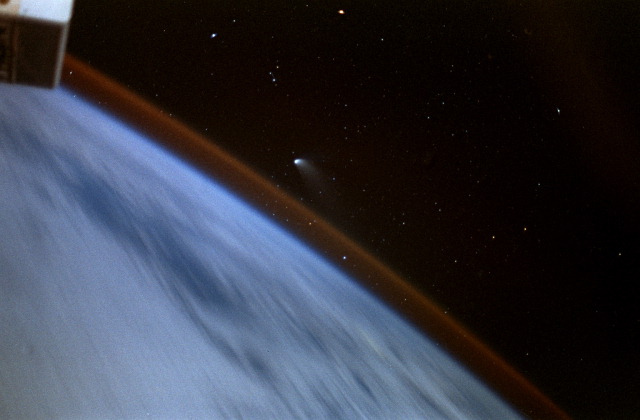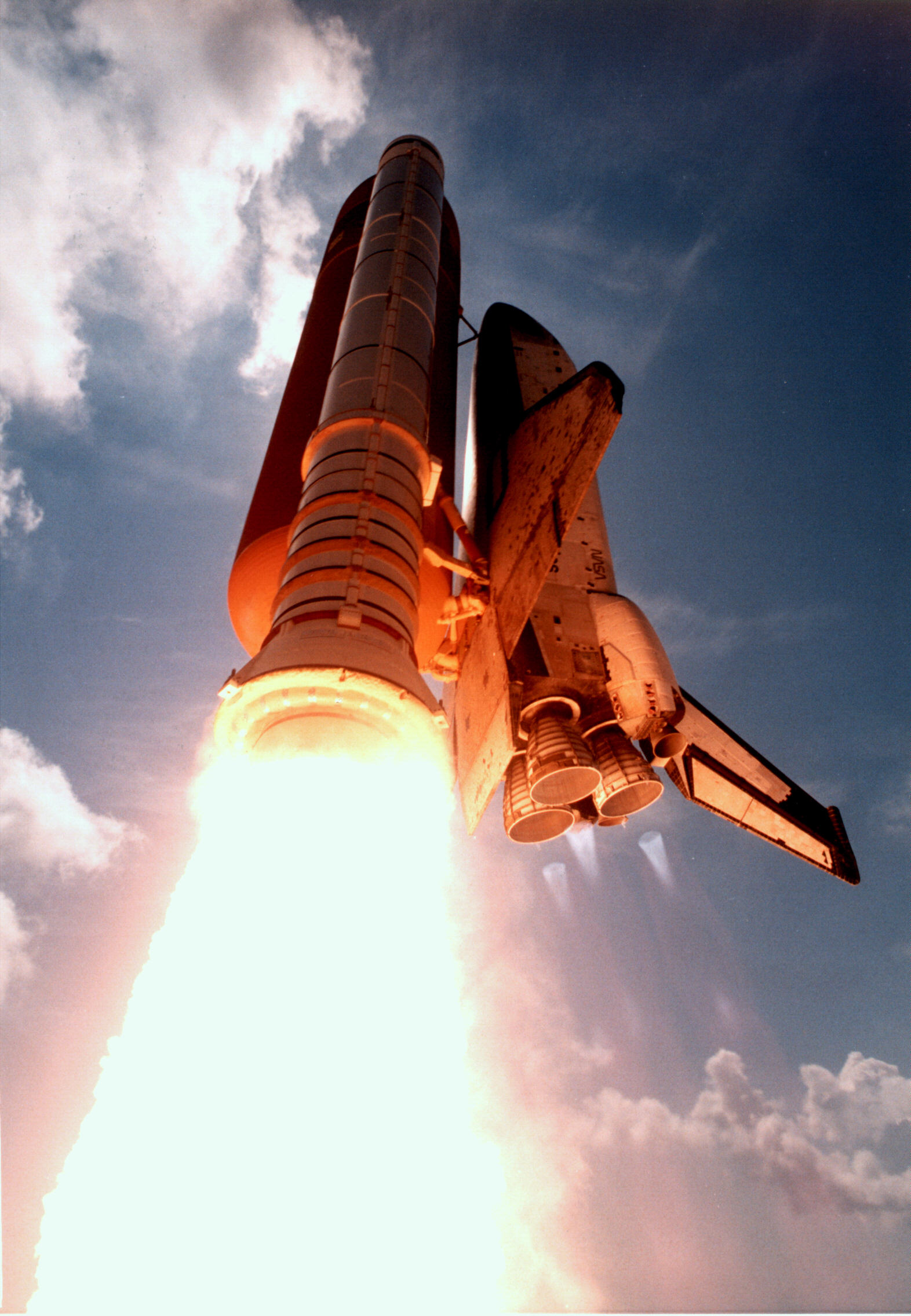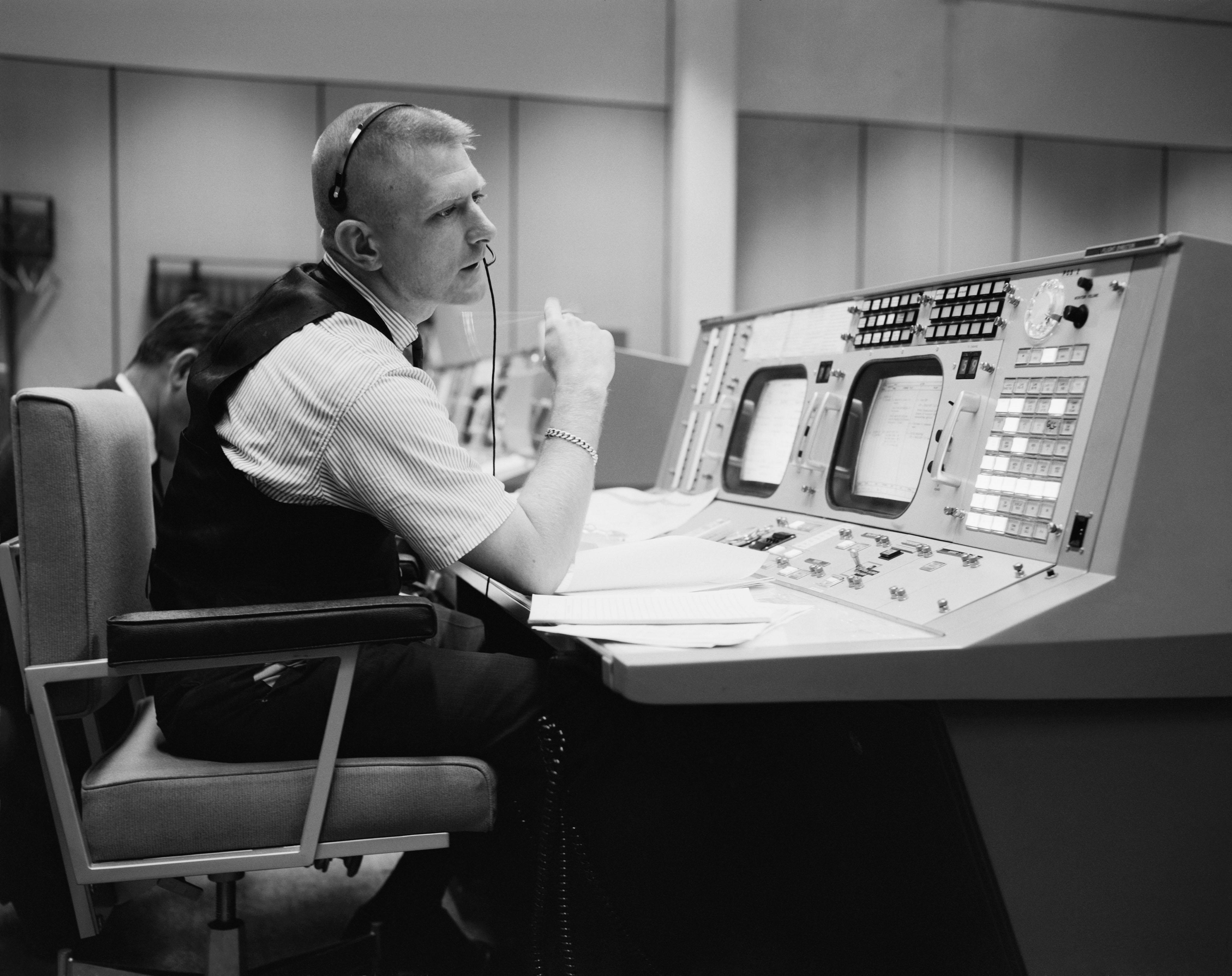|
STS-83
STS-83 was a NASA Space Shuttle mission flown by ''Columbia''. It was a science research mission that achieved orbit successfully, but the planned duration was a failure due to a technical problem with a fuel cell that resulted in the abort of the 15 day duration. ''Columbia'' returned to Earth just shy of four days. The mission was re-flown as STS-94 with the same crew later that year. Crew Mission highlights This mission was originally launched on 4 April 1997, and was intended to be on orbit for 15 days, 16 hours. The mission was cut short due to a problem with Fuel Cell #2 and it landed on 8 April, after 3 days 23 hours. NASA decided to fly the mission again as STS-94, which launched 1 July 1997. The primary payload on STS-83 was the Microgravity Science Laboratory (MSL). MSL was a collection of microgravity experiments housed inside a European Spacelab Long Module (LM). It built on the cooperative and scientific foundation of the International Microgravity Laboratory miss ... [...More Info...] [...Related Items...] OR: [Wikipedia] [Google] [Baidu] |
STS-94
STS-94 was a mission of the United States Space Shuttle '' Columbia'', launched on 1 July 1997. Crew Mission highlights This was a reflight of the STS-83 Microgravity Science Laboratory (MSL) mission. MSL was originally launched on 4 April 1997 at 2:20 pm EST and was intended to be on orbit for 15 days, 16 hours. The mission was cut short due to a problem with Fuel Cell #2 and ''Columbia'' landed on 8 April 1997 after 3 days 23 hours. The primary payload on STS-83 was the Microgravity Science Laboratory (MSL). MSL was a collection of microgravity experiments housed inside a European Spacelab Long Module (LM). It built on the cooperative and scientific foundation of the International Microgravity Laboratory missions (IML-1 on STS-42 and IML-2 on STS-65), the United States Microgravity Laboratory missions (USML-1 on STS-50 and USML-2 on STS-73), the Japanese Spacelab mission (Spacelab-J on STS-47), the Spacelab Life and Microgravity Science Mission (LMS on STS-78) and ... [...More Info...] [...Related Items...] OR: [Wikipedia] [Google] [Baidu] |
Roger Crouch
Roger Keith Crouch (born September 12, 1940) is an American scientist and astronaut who flew as a payload specialist on two NASA Space Shuttle missions in 1997. Personal Born September 12, 1940, in Jamestown, Tennessee, Crouch currently resides in Washington, D.C. with his wife, the former Anne Novotny. He has three grown children, Melanie, Kevin and Kenyon. His mother, Maxine Crouch, resides in Jamestown, Tennessee. He enjoys traveling, photography, sports, camping, hiking, fishing and whitewater rafting. Crouch is an Eagle Scout. Education Crouch attended high school at Alvin C. York Institute. He earned a Bachelor of Science in physics from Tennessee Polytechnic Institute in 1962, Master of Science and a Doctor of Philosophy in physics from Virginia Polytechnic Institute in 1968 and 1971, respectively. Career On loan from MIT to NASA Headquarters as the Senior Scientist for the International Space Station since 2000; prior to that, on loan from MIT as the Senior Scientist f ... [...More Info...] [...Related Items...] OR: [Wikipedia] [Google] [Baidu] |
Greg Linteris
Gregory Thomas Linteris (born October 4, 1957 in Englewood, New Jersey) is an American scientist who flew as a payload specialist on two NASA Space Shuttle missions in 1997. Education Linteris grew up in Demarest, New Jersey, where he attended Northern Valley Regional High School at Demarest. He received a bachelor of science degree in chemical engineering from Princeton University in 1979 and a master of science degree from the design division of the mechanical engineering department at Stanford University in 1984; he was awarded a doctorate in mechanical and aerospace engineering from Princeton in 1990 after completing a doctoral dissertation titled "Trace radical species detection in a turbulent chemical kinetic flow reactor using a 180⁰ laser induced fluorescence probe" supervised by Fred Dryer. Linteris is a member of the American Institute of Aeronautics and Astronautics, the American Physical Society, the Combustion Institute and Sigma Xi He has over 100 publications in th ... [...More Info...] [...Related Items...] OR: [Wikipedia] [Google] [Baidu] |
Space Shuttle Columbia
Space Shuttle ''Columbia'' (OV-102) was a Space Shuttle orbiter manufactured by Rockwell International and operated by NASA. Named after the Columbia Rediviva, first American ship to circumnavigate the upper North American Pacific coast and the Columbia (personification), female personification of the United States, ''Columbia'' was the first of five Space Shuttle orbiters to fly in space, debuting the Space Shuttle, Space Shuttle launch vehicle on STS-1, its maiden flight in April 1981. As only the second full-scale orbiter to be manufactured after the Approach and Landing Tests, Approach and Landing Test vehicle ''Space Shuttle Enterprise, Enterprise'', ''Columbia'' retained unique features indicative of its experimental design compared to later orbiters, such as test instrumentation and distinctive black Chine (aeronautics), chines. In addition to a heavier fuselage and the retention of an internal airlock throughout its lifetime, these made ''Columbia'' the heaviest of the fi ... [...More Info...] [...Related Items...] OR: [Wikipedia] [Google] [Baidu] |
STS-82
STS-82 was the 22nd flight of the Space Shuttle ''Discovery'' and the 82nd mission of the Space Shuttle program. It was NASA's second mission to service the Hubble Space Telescope, during which ''Discovery's'' crew repaired and upgraded the telescope's scientific instruments, increasing its research capabilities. ''Discovery'' launched from Kennedy Space Center, Florida, on 11 February 1997, returning to Earth on 21 February 1997 at Kennedy Space Center. Crew Spacewalks *''EVA 1'' Lee and Smith **Start: 14 February 1997 – 04:34 UTC **End: 14 February 1997 – 11:16 UTC **Duration: 6 hours, 42 minutes *''EVA 2'' Harbaugh and Tanner **Start: 15 February 1997 – 03:25 UTC **End: 15 February 1997 – 10:52 UTC **Duration: 7 hours, 27 minutes *''EVA 3'' Lee and Smith **Start: 16 February 1997 – 02:53 UTC **End: 16 February 1997 – 10:04 UTC **Duration: 7 hours, 11 minutes *''EVA 4'' Harbaugh and Tanner **Start: 17 February 1997 – 03:45 UTC **End: 17 February 1997 – 10 ... [...More Info...] [...Related Items...] OR: [Wikipedia] [Google] [Baidu] |
STS-84
STS-84 was a crewed spaceflight mission by Space Shuttle ''Atlantis'' to the Mir space station. Crew Mission highlights The STS-84 mission was the sixth Shuttle/ ''Mir'' docking mission and is part of the NASA/Mir program which consisted of nine Shuttle-Mir dockings and seven long duration flights of U.S. astronauts aboard the Russian space station. The prior Shuttle-Mir missions were STS-71, STS-74, STS-76, STS-79 and STS-81. The U.S. astronauts launched and landed on a Shuttle and served as ''Mir'' crew members while the Russian Mir crewmembers used their Soyuz vehicle for launch and landing. This series of missions expanded U.S. research on ''Mir'' by providing resupply materials for experiments to be performed aboard the station as well as returning experiment samples and data to Earth. STS-84 involved the transfer of of water and logistics to and from the ''Mir''. During the docked phase, of water, of U.S. science equipment, of Russian logistics along with of misc ... [...More Info...] [...Related Items...] OR: [Wikipedia] [Google] [Baidu] |
Comet Hale-Bopp From Space Shuttle Columbia (STS-83)
A comet is an icy, small Solar System body that, when passing close to the Sun, warms and begins to release gases, a process that is called outgassing. This produces a visible atmosphere or coma, and sometimes also a tail. These phenomena are due to the effects of solar radiation and the solar wind acting upon the nucleus of the comet. Comet nuclei range from a few hundred meters to tens of kilometers across and are composed of loose collections of ice, dust, and small rocky particles. The coma may be up to 15 times Earth's diameter, while the tail may stretch beyond one astronomical unit. If sufficiently bright, a comet may be seen from Earth without the aid of a telescope and may subtend an arc of 30° (60 Moons) across the sky. Comets have been observed and recorded since ancient times by many cultures and religions. Comets usually have highly eccentric elliptical orbits, and they have a wide range of orbital periods, ranging from several years to potentially several mil ... [...More Info...] [...Related Items...] OR: [Wikipedia] [Google] [Baidu] |
Japanese Space Agency
The is the Japanese national air and space agency. Through the merger of three previously independent organizations, JAXA was formed on 1 October 2003. JAXA is responsible for research, technology development and launch of satellites into orbit, and is involved in many more advanced missions such as asteroid exploration and possible human exploration of the Moon. Its motto is ''One JAXA'' and its corporate slogan is ''Explore to Realize'' (formerly ''Reaching for the skies, exploring space''). History On 1 October 2003, three organizations were merged to form the new JAXA: Japan's Institute of Space and Astronautical Science (ISAS), the National Aerospace Laboratory of Japan (NAL), and National Space Development Agency of Japan (NASDA). JAXA was formed as an Independent Administrative Institution administered by the Ministry of Education, Culture, Sports, Science and Technology (MEXT) and the Ministry of Internal Affairs and Communications (MIC). Before the merger, ISAS w ... [...More Info...] [...Related Items...] OR: [Wikipedia] [Google] [Baidu] |
STS-55
STS-55, or Deutschland 2 (D-2), was the 55th overall flight of the NASA Space Shuttle and the 14th flight of Shuttle '' Columbia''. This flight was a multinational Spacelab flight involving 88 experiments from eleven different nations. The experiments ranged from biology sciences to simple Earth observations. Crew Backup crew Mission highlights ''Columbia'' carried to orbit the second reusable German Spacelab D-2 and demonstrated the shuttle's ability for international cooperation, exploration, and scientific research in space. The Spacelab module and an exterior experiment support structure contained in ''Columbia''s payload bay comprised the Spacelab D-2 payload. The first German Spacelab flight, D-1, flew Shuttle mission STS-61-A in October 1985. The United States and Germany gained valuable experience for future space station operations. The D-2 mission, as it was commonly called, augmented the German microgravity research program started by the D-1 mission. T ... [...More Info...] [...Related Items...] OR: [Wikipedia] [Google] [Baidu] |
STS-61-A
STS-61-A (also known as Spacelab D-1) was the 22nd mission of NASA's Space Shuttle program. It was a scientific Spacelab mission, funded and directed by West Germany – hence the non-NASA designation of D-1 (for Deutschland-1). STS-61-A was the ninth and last successful flight of Space Shuttle ''Challenger''. STS-61-A holds the current record for the largest crew - eight people - aboard any single spacecraft for the entire period from launch to landing. The mission carried the NASA/European Space Agency (ESA) Spacelab module into orbit with 76 scientific experiments on board, and was declared a success. Payload operations were controlled from the German Space Operations Center in Oberpfaffenhofen, West Germany, instead of from the regular NASA control center. This was the first spaceflight to include multiple crewmembers from any single country other than the United States or Soviet Union. Crew Backup crew Crew seating arrangements Mission summary Space Shutt ... [...More Info...] [...Related Items...] OR: [Wikipedia] [Google] [Baidu] |
STS-78
STS-78 was the fifth dedicated Life and Microgravity Spacelab mission for the Space Shuttle program, flown partly in preparation for the International Space Station project. The mission used the Space Shuttle ''Columbia'', which lifted off successfully from Kennedy Space Center's Launch Pad 39B on June 20, 1996. This marked the 78th flight of the Space Shuttle and 20th mission for ''Columbia''. Crew Backup crew Mission objectives * Research into the effects of long – duration spaceflight on human physiology in preparation for flights on the International Space Station. * 22 life science and microgravity experiments using the Orbiter's pressurised Life & Microgravity Spacelab module (LM2). * Tests into the use of the Orbiter's Reaction Control System jets to raise the altitude of orbiting satellites. Mission highlights During the 16-day, 21-hour mission, the crew of ''Columbia'' assisted in the preparations for the International Space Station by studying the effects of ... [...More Info...] [...Related Items...] OR: [Wikipedia] [Google] [Baidu] |
Flight Controller
Flight controllers are personnel who aid space flight by working in such Mission Control Centers as NASA's Mission Control Center or ESA's European Space Operations Centre. Flight controllers work at computer consoles and use telemetry to monitor various technical aspects of a space mission in real time. Each controller is an expert in a specific area and constantly communicates with additional experts in the "back room". The flight director, who leads the flight controllers, monitors the activities of a team of flight controllers, and has overall responsibility for success and safety. This article primarily discusses NASA's flight controllers at the Johnson Space Center (JSC) in Houston. The various national and commercial flight control facilities have their own teams, which may be described on their own pages. NASA's flight controllers The room where the flight controllers work was called the mission operations control room (MOCR, pronounced "moh-ker"), and now is calle ... [...More Info...] [...Related Items...] OR: [Wikipedia] [Google] [Baidu] |
.jpg)




.jpg)


